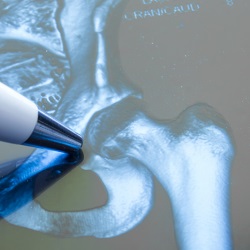
Rise of GLP-1s reaches hospital care
The recent surge in popularity of glucagon-like peptide-1 (GLP-1) receptor agonists has required hospitalists to know about side effects and inpatient management of the drugs.

The recent surge in popularity of glucagon-like peptide-1 (GLP-1) receptor agonists has required hospitalists to know about side effects and inpatient management of the drugs.

A patient's chest X-ray made him unforgettable.
A recent trial compared catheter ablation to lifestyle modification plus rate and/or rhythm medications in patients with atrial fibrillation and obesity, while a meta-analysis compiled trials that compared catheter or surgical ablation to other interventions for atrial fibrillation.
A retrospective analysis of patients in the ICU after an acute myocardial infarction (AMI) found that receipt of opioids in general was associated with mortality, but after adjustment, the link was isolated to morphine specifically.
In older patients with acute coronary syndrome (ACS), an early invasive strategy was associated with lower risk of recurrent myocardial infarction and repeated coronary revascularization but increased risk of major bleeding compared to a conservative strategy, a meta-analysis concluded.
Patients who were on serotonin–norepinephrine reuptake inhibitors (SNRIs) and developed Takotsubo cardiomyopathy were less likely to die at seven days and one year, a propensity-matched cohort study found.

Every week, ACP Hospitalist posts a question about the previous week's issue. See how well you remember what you've read compared to other readers.

Physicians may be familiar with the drug dexmedetomidine from ICU care. An expert explains how to handle its growing presence in street drugs.

A clinician team took over postdischarge lab follow-up and nonurgent imaging.
An analysis of hospitalists participating in the American Board of Internal Medicine (ABIM) Longitudinal Knowledge Assessment (LKA) found that those with scores in the bottom quartile had more patients who died or were readmitted within seven days than those who scored higher.
Having more comorbid conditions or an enterococcal bloodstream infection (BSI) without an identified source independently predicted 14- and 30-day mortality, but receiving early empiric therapy did not, according to a retrospective cohort study in Italy and Spain.
Having stage 1 acute kidney injury (AKI) was not associated with any increase in mortality risk for septic shock patients, but having stage 2 or 3 AKI did increase risk, a retrospective study found. The kidneys fully recovered in 88.2%, 78.5%, and 63.2% of patients with stage 1, 2, and 3 AKI, respectively.
In an open-label trial, seven Canadian hospitals used lactated Ringer's solution for 12 weeks and seven used normal saline. Then they switched. Patient outcomes didn't vary significantly by which fluid was used.
Optimizing hip fracture management can improve outcomes from this common cause of hospitalization, an expert at the American Geriatrics Society's annual meeting explained.

Methemoglobinemia, heart failure, pseudogout, and other diagnoses.